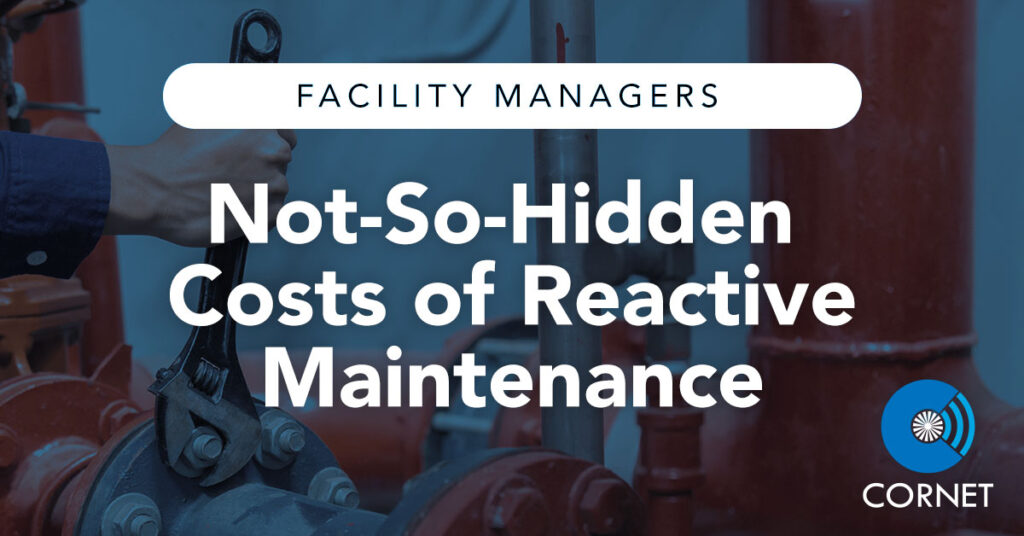“This is the way we’ve always done it,” is one of the most dangerous phrases in every aspect of business, including facility management. When it comes to building and equipment maintenance, traditional “don’t fix it if it isn’t broken” wisdom, is not wrong per se. However, emerging data shows that a more proactive approach offers significant cost savings, and therefore, a better solution.
The Not-So-Hidden Costs of Reactive Maintenance
Reactive maintenance is the practice most old-school (and realistically, some new school) facility managers follow. Because you’re only fixing things when they break, it may make sense if you’re looking at month-over-month, and in some cases, year-over-year costs. However, even though traditional maintenance saves money upfront, it comes with significant direct and indirect costs:
- Large scale infrastructure/equipment/system replacements
- Shorter infrastructure/equipment/system life span
- Costly or delayed repairs due to parts availability
- Higher emergency service labor costs
- Lost productivity due to unplanned shutdowns
- Catastrophic product or data damage due to failed refrigeration, plumbing, or heating systems.
The IoT and Cost Savings
All too often, facilities are left in the dust when it comes to how to use new technologies like the Internet of Things (IoT) to monitor their infrastructure, collect data, establish an operational baseline, and ultimately lower maintenance, repair, and replacement costs.
System monitoring has been available for a few decades now. However, as the IoT grows, we have access to over three times the data points that we did even 10 years ago. By using sophisticated algorithms to monitor and track those data points, we can learn more about what your system and data look like when things are running optimally, and similarly, notice when – and where – something is starting to fail.
Instead of experiencing high-cost sudden catastrophic failure, these predictive analytics allow us to identify the source of a future problem, order parts, and schedule preventative maintenance. As a result, your company will experience minimal disruption to productivity and avoid many of the expensive problems outlined above.
Common Latencies in Upgrading
As soon as facility manager realize the benefits of predictive analytics, most are quick to jump on board. If a company delays adopting new tech, it’s usually due to a lack of understanding or a misconception. The four most common reasons are:
- Lack of Continuity – the team member responsible for operations has transferred locations or moved on and the new team member isn’t aware of the system or how it works.
- Lack of Awareness – operations managers don’t understand the opportunities presented by 21st Century tech.
- Lack of Retrofit Awareness – the ops team believes retrofits for their existing equipment are not available.
- Lack of Cost Awareness – management believes that implementing the tech is not cost effective.’
Forward-Thinking Facility Managers Lead the Charge
More and more facilities are beginning to adopt predictive analytics and maintenance because it’s just good business sense. Even factoring in higher monthly monitoring costs, predictive analytics lead to nearly 30% cost savings over the traditional reactive approach, a longer equipment lifespan, and decreased energy usage.
What’s Holding Your Facility Back?
If your facility hasn’t yet explored utilizing predictive analytics, you’re not alone, however it’s never too soon to start getting a baseline so that you can ensure the long-term health of your facility. Contact us today.






